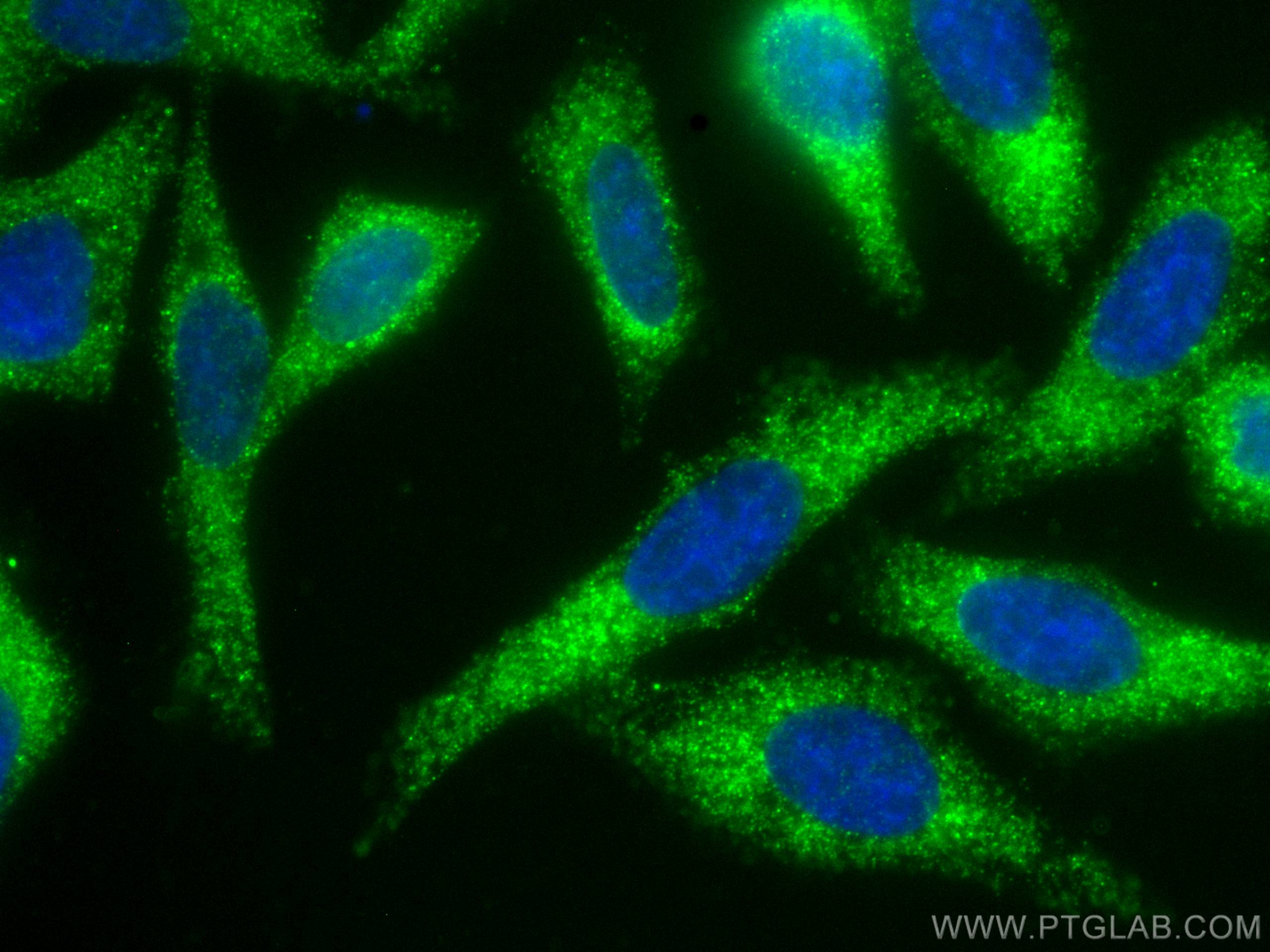Anticorps Monoclonal anti-FGL1
FGL1 Monoclonal Antibody for IF/ICC
Hôte / Isotype
Mouse / IgG1
Réactivité testée
Humain, porc
Applications
IF/ICC
Conjugaison
CoraLite® Plus 488 Fluorescent Dye
CloneNo.
2B11C6
N° de cat : CL488-67391
Synonymes
Galerie de données de validation
Applications testées
| Résultats positifs en IF/ICC | cellules HepG2, |
Dilution recommandée
| Application | Dilution |
|---|---|
| Immunofluorescence (IF)/ICC | IF/ICC : 1:50-1:500 |
| It is recommended that this reagent should be titrated in each testing system to obtain optimal results. | |
| Sample-dependent, check data in validation data gallery | |
Applications publiées
| IF | See 1 publications below |
Informations sur le produit
CL488-67391 cible FGL1 dans les applications de IF/ICC et montre une réactivité avec des échantillons Humain, porc
| Réactivité | Humain, porc |
| Réactivité citée | Humain |
| Hôte / Isotype | Mouse / IgG1 |
| Clonalité | Monoclonal |
| Type | Anticorps |
| Immunogène | FGL1 Protéine recombinante Ag8581 |
| Nom complet | fibrinogen-like 1 |
| Masse moléculaire calculée | 312 aa, 36 kDa |
| Numéro d’acquisition GenBank | BC007047 |
| Symbole du gène | FGL1 |
| Identification du gène (NCBI) | 2267 |
| Conjugaison | CoraLite® Plus 488 Fluorescent Dye |
| Excitation/Emission maxima wavelengths | 493 nm / 522 nm |
| Forme | Liquide |
| Méthode de purification | Purification par protéine G |
| Tampon de stockage | PBS with 50% glycerol, 0.05% Proclin300, 0.5% BSA |
| Conditions de stockage | Stocker à -20 °C. Éviter toute exposition à la lumière. Stable pendant un an après l'expédition. L'aliquotage n'est pas nécessaire pour le stockage à -20oC Les 20ul contiennent 0,1% de BSA. |
Informations générales
Fibrinogen-like 1 (FGL1), also termed hepatocyte-derived fibrinogen-related protein 1 (HFREP1) or hepassocin, is a predominantly liver expressed protein that has been implicated as both a hepatoprotectant and a hepatocyte mitogen. FGL1 expression is decreased in hepatocellular carcinoma (HCC), and it may play a role in the development of hepatocellular carcinomas.
Protocole
| Product Specific Protocols | |
|---|---|
| IF protocol for CL Plus 488 FGL1 antibody CL488-67391 | Download protocol |
| Standard Protocols | |
|---|---|
| Click here to view our Standard Protocols |


